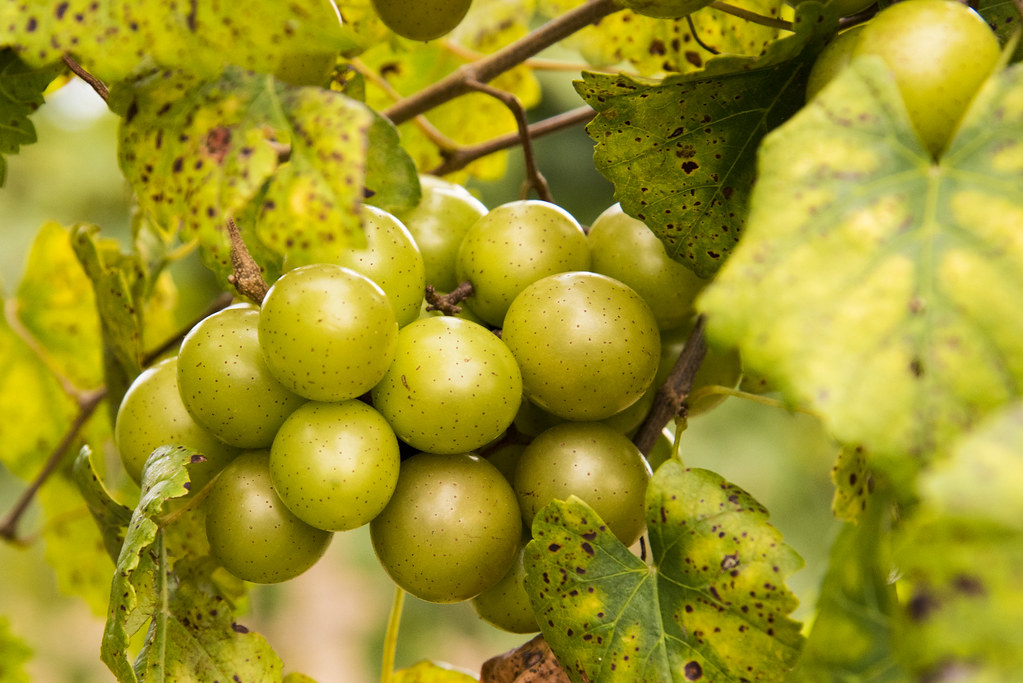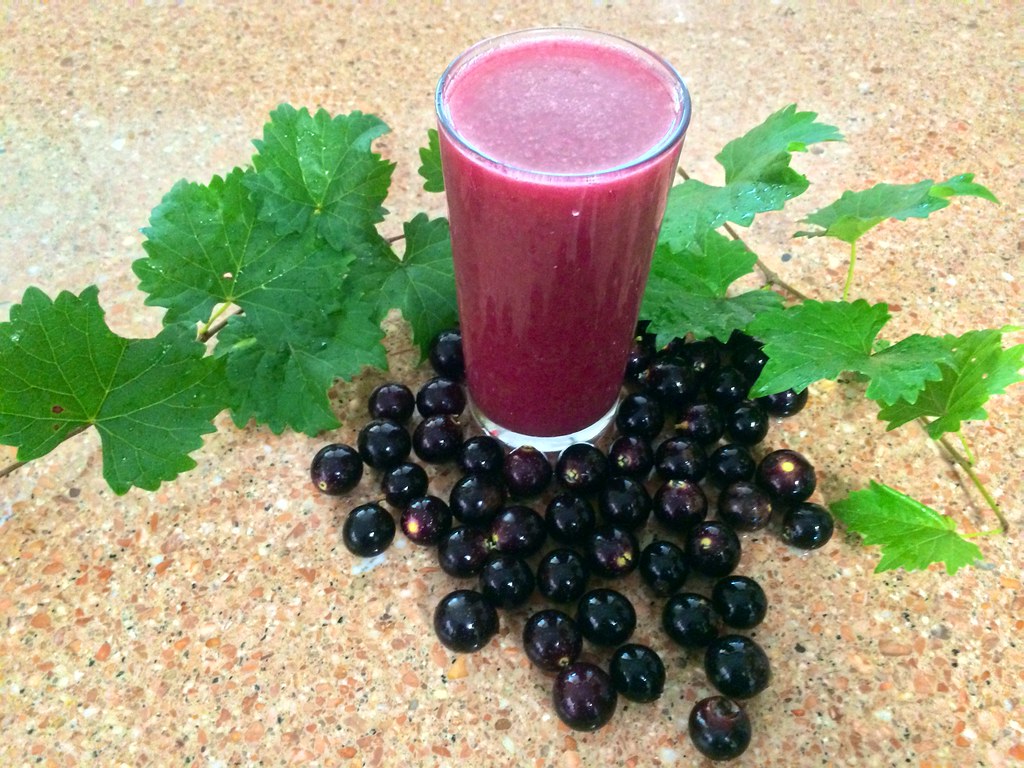
Muscadine wine is like a mix of history and flavors. It comes from special muscadine grapes that only grow in the southeastern US. These grapes have a sweet and musky taste and tough skin. Although muscadine wine isn’t found everywhere, plenty of people truly relish producing it themselves at home.
If you’re someone who wants to try, you’re at the right spot. We have an easy-to-follow guide that demonstrates the step-by-step process of making muscadine wine, bringing the authentic taste of muscadine right to your home.
Requirements for Making Muscadine Wine
For a better understanding of how to make muscadine wine, become familiar with the necessary equipment and ingredients. If you’ve made fruit wine before, most likely you already have most of these ingredients and tools. Just to help you remember, a list of all the key things you’ll need is mentioned below:
Tools You Will Need
If you’re new to making wine, you likely don’t have these tools yet. Instead of buying them individually from different stores, we suggest getting a complete wine-making kit. You can find these kits online and in local markets. Now, let’s see what you’ll need to make wine at home!
- A fermentation container with a capacity of at least 1 gallon
- 2 demijohns made of glass or plastic, each with a minimum size of 1 gallon (equipped with airlocks)
- A generously sized straining bag or muslin cloth
- A siphon tube made of vinyl, measuring at least 3 feet in length
- 6 wine bottles along with corks and a corker
- A sizeable funnel

Useful Tips
If you don’t sterilize your equipment when making wine, it can lead to the growth of harmful microorganisms that ruin the wine and create strange tastes, cloudiness, or even health issues. Cleaning and sanitizing all the winemaking tools before and after using them is extremely important. This helps avoid contamination and guarantees that the wine remains free from unwanted microbes. So, follow these tips to get the best results.
- We recommend using Campden tablets for sterilizing (they also help stabilize the wine), but using hot water can also work.
- It’s best to steer clear of bleach or other harmful substances, as any residue left behind can make you sick. From our perspective, it’s not worth the risk.
- Muscadines are quite acidic, so they might irritate sensitive skin. Using powder-free latex gloves or clean household rubber gloves can protect your hands from acidity.
Editor’s Pick: Best Breweries In Las Vegas
Ingredients for Muscadine Wine
Your equipment is all set, and you’re excited to get started. Now, it’s time to collect the important ingredients that will soon turn into wonderful muscadine wine. The following are some ingredients that you’ll require:
- Get 3 pounds (1.3 kilograms) of fresh muscadine grapes. Note that using dried fruit won’t work for this recipe, as it changes the sweetness and affects the flavor and fermentation process.
- 2.5 pounds (1.13 kilograms) of granulated sugar.
- Acquire red wine yeast which refers to the instructions on the packet for guidance on the right amount to use and how to use it.
- Further, you will require yeast nutrients. Similarly, follow the packet instructions to determine the appropriate quantity.
- A wine stopper or stabilizer, such as potassium sorbate.
Helpful: The 8 Best Breweries in Seattle for an Enchanting Experience!
Step By Step Guide to Make Muscadine Wine
You’ve gathered all the equipment and ingredients. Congratulations on clearing the first hurdle! Now, it’s time for some action. Be sure to carefully follow every step exactly as it’s explained. This way, you’ll guarantee that you capture the authentic taste of the drink you’re aiming for.
Step 1 – Get Your Muscadines Ready
If you have delicate skin, it’s a good idea to put on your rubber gloves at this point. Thoroughly wash all the grapes and detach them from the vine. Ensure there are no small bits of stem left on the fruit’s end.
Now comes the challenging part – breaking through the tough outer layer of the fruit. This is a bit more difficult than it might seem. While enjoying muscadines as a snack, you might just prick the skin with a needle or knife and enjoy the pulp from the inside.

However, for making wine, you’ll want to cut into the fruit as extensively as possible. This allows you to mash up the mixture effectively. Various techniques exist for this process, and you’ll likely discover your own preferred method. The following are a few that we find useful:
Bread Knife
Place a handful of muscadines between two Tupperware lids or cutting boards, ensuring they’re held firmly in place. Next, press down on the top surface to prevent the muscadines from moving. Use a bread knife or a knife with a serrated edge to slice horizontally through the middle, effectively halving all the muscadines.
Freddy Kruger
Put your muscadines in a big bowl. Take four knitting needles with pointy ends, and hold them between your fingers like a fist. Use your ‘Freddy Kruger’ hands to punch into the bowl, poking as many grapes as you can each time.
Softening
With a pair of protective work goggles on, grab a meat tenderizer (a clean mallet or hammer would work too) and give the grapes a good pounding until you’re satisfied!
Freezing Method
Perhaps the simplest way to remove the skins, though not as enjoyable as other options. Place the grapes in a bag and freeze them. After a few hours, the skins should crack, allowing you to defrost them and proceed to Step Three.
Step 2 – Begin the Cooking Process
Heat 3 quarts of water until it boils, then let it cool down. Next, mix the sugar into the water and stir until it’s fully dissolved. As you keep going with this step, make sure to mash your muscadines really well. Try to get out as much pulp as you can right now.
Once done, securely place your straining bag over the top of your brewing container. Pour the grape mixture over the bag, ensuring you squeeze it well to extract every bit of grape juice. Now, your container should have a reddish liquid that looks a bit cloudy. Pour in the water and sugar then introduce the yeast nutrient and yeast.
Give the mixture a gentle stir then put a cover on the brewing container. Allow it to ferment for around 7 to 10 days and continuously stir it. You’ll notice that the mixture becomes quite bubbly during the initial days before settling down. When the bubbles cease, the fermentation process is complete.
Useful Tips
If you own a hydrometer, this is when you can put it to use. Within the initial 24 hours, you should get a gravity measurement ranging from 1.100 to 1.003. When the reading hits 1.030, it signals the completion of fermentation and signifies your readiness to progress to the next stage.
For those employing an acid testing kit, you can begin checking your wine after 24 hours. Refer to the instructions provided in the package to obtain your reading. Your aim should be to get an acidity level of no more than 7 p.p.t. tartaric acid.
Step 3 – Fermentation
After approximately a week, your muscadine mix should have completed the initial part of the fermentation process. However, you might still notice a bit of foam on the liquid’s surface and some sediment at the bottom.
Strain the mixture once again to remove these small particles. Now, it’s time to transfer the wine into one of your demijohns. Arrange a work area with a few towels where you can work without worry. Pour the wine mix directly into the demijohn by using your funnel.

If the liquid doesn’t reach the bottle’s neck, add some filtered or bottled water along with a teaspoon or two of sugar (the rule is one part sugar for every three parts water).
Following that, put in the bung and airlock, and allow the demijohn to sit in a cool and dark place for at least three weeks.
Step 4 – Rack and Repeat
In about three weeks, your wine will begin to look more like actual wine, and any bubbling will have become less or stopped. Other than a delicate layer of yeast and fruit sediment settled at the base of the bottle, the liquid should showcase a bright, clean, and lively ruby-red color. Now, it’s time to clarify the wine further by transferring it.
This step involves moving all the wine into your second demijohn, leaving behind any tiny residues in the first one. Because muscadines have a deep color and tough skin, it’s important to repeat the transferring process at least twice to get the best results.
After finishing the initial transfer, the next ones will become easier. Follow the instructions below for smooth and successful transfers:
- Carefully move the wine jar to a higher surface without shaking the sediment. Wait for it to settle if needed.
- Put another empty jar on a lower surface.
- Take out the cork and the airlock, and insert a tube into the wine, near the bottom but not touching the sediment.
- Suck the other end of the tube until the wine comes out, then put it into the empty jar and let it fill up.
- Add some water and sugar to the new jar of wine, and put the airlock back on. Store it in a cool, dark place for three weeks.
- Repeat the process after three weeks.
Step 5 – Packaging Wine in Bottle
To achieve the best outcomes, perform a couple of rackings on your wine before thinking about bottling. Remember to wait approximately three weeks between each racking session. Once satisfied with the wine’s appearance, start bottling.
Use a siphon tube to move the wine into glass bottles, then cork the bottles and make labels with the bottling date and ingredients. Muscadine wine matures best after 2-3 years. Taste the changing flavor by opening bottles every 6 months. After 2 years, the wine turns rich like port – perfect with cheese and biscuits.

Suggested Reading: Best Breweries in Mackinaw City For Beer Lovers
Conclusion
Making muscadine wine at home is a delightful journey that transforms those unique muscadine grapes into a delicious and flavorful beverage. While it may seem like a complex process, with the right equipment, ingredients, and a pinch of patience, you can create your own batch of muscadine wine. Just remember, as you begin on this winemaking adventure, to handle the muscadines with care and give your wine the time it needs to ferment and mature.
How to Make Muscadine Wine? - FAQs
No, it’s best to use fresh muscadine grapes for winemaking, as dried fruit can alter the sweetness and flavor of the wine and affect the fermentation process.
The entire process of making muscadine wine, from grape preparation to bottling, typically takes around 2 to 3 months.
Yes, you can use a plastic fermentation container as an alternative to glass. Just ensure it’s food-grade and suitable for winemaking.
Yes, muscadine wine can benefit from aging. Store it in a cool, dark place with a consistent temperature. To enjoy its evolving flavors, consider opening bottles every 6 months after the initial aging period.
![What To Wear To a Drag Show? [HOTTEST Outfit Ideas]](https://hopdes.com/wp-content/uploads/2024/01/What-to-wear-to-a-Drag-Show-390x220.jpg)



![What to Wear to an Outdoor Concert? [Cute Outfit Ideas]](https://hopdes.com/wp-content/uploads/2023/11/What-to-Wear-to-an-Outdoor-Concert-Cute-Outfit-Ideas-390x220.jpg)
